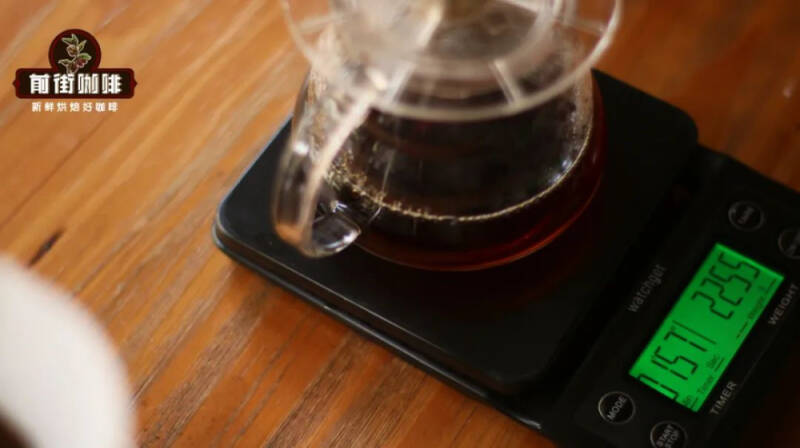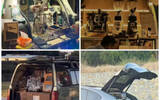Analysis of the reasons for the slow flow of coffee coffee always blocked how to do?

Hand-brewed coffee, as a representative of trickling extraction, can be seen as a process of first injecting water into the coffee powder and letting it flow through the powder layer to the next pot. With the help of electronic scales, we can control the time of water injection very well, but because the total time of water flowing into the next pot is affected by factors such as the grinding thickness of coffee powder, the water absorption of particles, the method of water injection, the structure of filter cup (filter paper material) and so on, it is impossible to accurately control the total time of coffee drip filtration.

For many beginners, time is the easiest velocity test to grasp. When all the target water is injected, the coffee liquid in the filter cup is dropped into the pot exactly 2 minutes as expected, indicating that the brewing parameters are in a reasonable range, and once the duration exceeds a lot (30 seconds ~ 1 minutes) or far less than 2 minutes, it means that something may be wrong and need to find out and prescribe the right medicine as soon as possible.
Of all the questions about extraction time answered in the front street, it is most common that the time is forced to lengthen due to the slow flow at the end, which is generally described as "stagnant water" or "flooding" at the end of the coffee, so what should we do?
The stagnant water is serious, will it affect the taste of coffee?
No matter how we make coffee, the extraction principle is the same. For the brewing method of soaking type, the coffee is easy to be light and tasteless when the time is short, while it will become strong, bitter and astringent over a long time, such as cold extract and French kettle. By the same token, the longer the dripping time of a pot of hand-brewed coffee, the more time the powder is exposed to, the more soluble flavor substances are released, and accordingly, the higher the probability of over-extraction.
When there is stagnant water in the tail section, we pay close attention to the powder layer, we can find that the foam floating on the surface is very thin, showing a shallow yellow-white, sometimes there is no foam, only the water deposited in the filter cup. This phenomenon means that most of the coffee powder has sunk at the bottom, blocking the flow of water, and by the time it slowly enters the pot, there is a good chance that too much soluble matter has been brought out of the coffee, and most of these late-released macromolecules are bittersweet, so the coffee will not taste good.
Why is it so slow to get down the water at the end of the day?
As mentioned earlier, coffee powder is a key factor in blocking the flow of water. The finer the grinding, the greater the resistance and the slower the flow rate. Generally used for hand-made coffee powder grinding degree is about the size of granulated sugar, if you use the No. 20 screen to screen, coffee powder pass rate between 70-80% of the thickness. But grinding is impossible to achieve absolute uniformity, in other words, coffee powder will certainly contain thicker particles mixed with finer particles.
Usually, the serious stagnant water in the back section (the coffee liquid has not been dripped for more than 2 minutes and 20 seconds) is due to the poor grinding quality of the bean grinder and the production of too much fine powder. In the process of circular water injection, water is the fluid that drives the coffee powder. Along the stirring path, the smaller fine powder will be the first to "get stuck" in the filter hole at the bottom, hindering the penetration of hot water.
If the cooking object is the fruit acid bean with shallow baking degree, the structure of the bean is more compact and the water absorption effect is weaker, and the higher bean body density makes it easier to sink to the bottom first, resulting in blockage and siltation.
In addition to the impact of grinding, water injection techniques will also cause the phenomenon of water plugging in the back section. When some friends are cooking, they are always used to pouring in a big circle, which can make the water level rise gradually in the early stage, but in the later stage, the water injected into the large circle is easy to "pour" on the filter paper. the powder walls that had previously accumulated on the wall of the filter cup were all washed to the bottom at once, resulting in a lack of water.
It is also a problem in the management of the powder bed, if the intensity of the early water injection is too gentle, the powder bed is not stirred and raised properly, and the whole accumulates at the cone angle. So when it comes to the third stage of water injection, even if a large flow of water is used to raise the spout, it is difficult to "save" the low powder layer, and the coffee liquid can only be dripped down the filter cup by gravity.
After understanding the principle, we have to find out where the corresponding problem lies.
Teach you to find the "culprit" that causes stagnant water.
When you bake beans deep or shallow, the final powder bed is wet and muddy like the picture below, and the time is often more than 2 minutes, and the coffee has a low sense of turbidity, which means it is caused by too much fine powder brought by the grinding equipment. To solve this kind of problem, the most effective way is to directly change to a better quality grinding machine, after all, the finer the grinding plate, can greatly reduce the annoyance caused by very fine powder.
In the case of not changing the equipment, Qianjie suggests that the degree of grinding should be thickened first, the overall particles are coarse, and the corresponding ultra-fine powder will be appropriately reduced. In addition, changing a fast filter cup can also effectively solve the problem of slow launching, such as Hario V60 and ice pupil B75, which are commonly used in the front street.
And if we only brew shallow baked beans, the flow rate is slow, and if we want to avoid the negative taste caused by "flooding" for a long time, we might as well adjust the technique.
Take the three-stage style commonly used in the front street, for example, after steaming, it is first injected with a large vertical current from the center and keeps the size of an one-dollar coin in a circle, from which you can see that foam continues to emerge from it, and as the water level continues to rise, coffee powder is gradually pushed to the edge to form a powder wall 2gamma and 3 high. In the last section, a small water flow is used to maintain a small circle, so that the powder can touch the water more evenly and prevent the coffee powder from being washed down at the edge of the filter cup.
-END-
Front Street Cafe
No. 10 Baoqian street, Yandun road, Dongshankou, Yuexiu district, Guangzhou, Guangdong province
Important Notice :
前街咖啡 FrontStreet Coffee has moved to new addredd:
FrontStreet Coffee Address: 315,Donghua East Road,GuangZhou
Tel:020 38364473
- Prev

Center console equipped with hand washing bar, net friend: car own coffee house
▲ Click attention| The coffee workshop mentioned coffee cart, and the first thing that comes to mind should be the mobile coffee cart with the trunk transformed. In recent years, many young people with coffee dreams have chosen to transform their cars and open a coffee shop that does not stick to a certain location at a lower cost. ran
- Next

Staff wrote Rap, Manner, listen!
▲ Click attention| Daily Boutique Coffee Culture Magazine Coffee Workshop yesterday, a post titled "Manner, Manner, I want to diss you." The author expresses his experiences and emotions during his work at Manner in words, writing a song that makes netizens admire R.
Related
- Why can American refills for free? The difference between Americano and American drip pot coffee
- Being chased out of the rain in front of Starbucks?! Store: Sheltering from rain under umbrellas poses a safety hazard
- The white moonlight has changed?! Lucky launches "Big Winter Pear American"
- Hand-brewed coffee three-stage method, high-sweet and universal brewing method to share! What does the high sweet water level of hand-brewed coffee mean?
- What is the difference between raw, refined and full espresso coffee? How to extract espresso and taste good?
- A complete list of coffee bean names and their meanings! What is Yejia Shefi coffee? Where is Mantelin coffee?
- What grade does Arida Manor Kaduai coffee beans belong to? What treatment is Arida ASD slow anaerobic sun exposure?
- The milk tea cup becomes smaller?! Overlord Tea Girl launches a new "Return to Yunnan" series
- Accused of selling counterfeit and high-priced coffee beans! Well-known boutique coffee brand "Oukelao" bowed and apologized!
- How to make espresso dumplings? Can I eat coffee and glutinous rice balls together?

